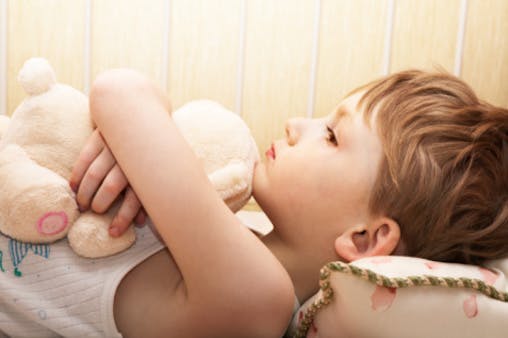Detecting an Ear Infection

Question
How do you deduce that a child has an ear infection? I had terrible ones as a young thing (my dad smoked a lot), but my mother didn't always know I had them until they were rather far along. How will I know when my baby has one? What are the symptoms?
Philadelphia, Pennsylvania
Dr. Greene’s Answer:
Since ear infections are the most common diagnosis in pediatrics, it is worthwhile for a parent to learn to become a Sherlock Holmes, able to notice the clues and suspect an ear infection before it becomes advanced. Detecting an ear infection in your child requires some basic information.
First, let’s dispatch with a red herring. You’ve found a clue — you notice ear pulling in your child under age two. What does this tell you? Shockingly, careful studies (e.g. Pediatrics 1992; 90:1006) have found that 0% of children with ear pulling as the primary sign had ear infections. Even in conjunction with other important clues, such as fever, only 15% of those brought in for ear pulling actually had ear infections. Most commonly, children pull their ears from itching (caused by soap or shampoo in the canal, or by a healing infection), teething, exploration, comfort, or habit. You are now already ahead of the crowd. Ear pulling is one of the most common reasons for pediatric office visits.
Fact: Most ear infections hurt
The pain builds as the pressure in the ear builds, from a dull ache to a sharp stabbing pain. The pressure is relieved intermittently, so the pain comes in waves. The pain is worse at night. In an older child, “My ear hurts!” is the most reliable clue. Most ear infections, however, occur in children under age two. In younger children the best clue is evidence of pain, such as crying or screaming (usually less than half an hour), fussiness or irritability (worse when lying down), or suddenly increased difficulty sleeping, especially at night. They often have no pain the following morning.
Fact: In an ear infection, fluid fills the middle ear
Older children often mention a feeling of fullness or decreased hearing in the affected ear. This is difficult to detect in an infant, but you might notice shaking of the head.
Fact: Only one third to one half of children with an ear infection will develop a fever
Temperatures over 104 occur in fewer than 5% of ear infections. Fevers are more common in infants and toddlers than in older children. By itself, a fever is not a powerful clue – but in conjunction with the clues outlined above, it is quite incriminating indeed (the combination of fever and pain is most often an ear infection in infants and toddlers).
Other Suspects: Don’t let other symptoms, such as loose stools or vomiting, throw you off the trail when detecting an ear infection. Ear infections are sometimes accompanied by systemic symptoms.
Accomplices: This job cannot be pulled off alone. Something must plug the eustachian tube for an ear infection to occur. Most commonly an upper respiratory infection is the culprit. The accomplice might also be a change in elevation, allergies, an irritant (such as cigarette smoke), reflux, or drinking a bottle while lying on the back.
The Scene of the Crime: Throughout the United States, and in the United Kingdom, ear infections are markedly more common in December through March. Their incidence is particularly low from July to September.
The Trial: Even with the above clues, only objective evidence can clinch the diagnosis. There is now a wonderful device that uses sonar-like technology to detect fluid in the ear. The device, called an EarChek, is inexpensive, accurate, and simple to use at home. If there is no fluid, there is no ear infection. If fluid is present, only direct visualization of the eardrum by a skilled observer can determine if this is an acute ear infection.
Remember, it is possible to have an ear infection in an infant with no clues. Here, a positive reading on the EarChek may be the first sign.
CellScope is another home device that aids you in detecting an ear infection by allow you to use your smart phone to check your child’s ears when you suspect an ear infection. You can then send videos from your CellScope to their doctors for an evaluation within two hours.
Also, regular well-child pediatric visits in the first two years screen for these silent episodes.
Let’s try our hand at sleuthing. Which of the following two cases is more likely to have an ear infection? Click to find the answer.
Case 1: A ten-month-old girl, who had been sleeping through the night, has now been waking up each night for one week. She pulls herself to standing in the crib, and rubs her right ear. She calms quickly when picked up by her parents.
Case 2: A seven-month-old boy has had a cold for three days. Last night he woke up screaming, and remained irritable for several minutes even when he was picked up. He felt hot to the touch. This morning, he seems completely fine.
How did you make out with the sleuthing? Did you guess the correct answer? Let us know below.


